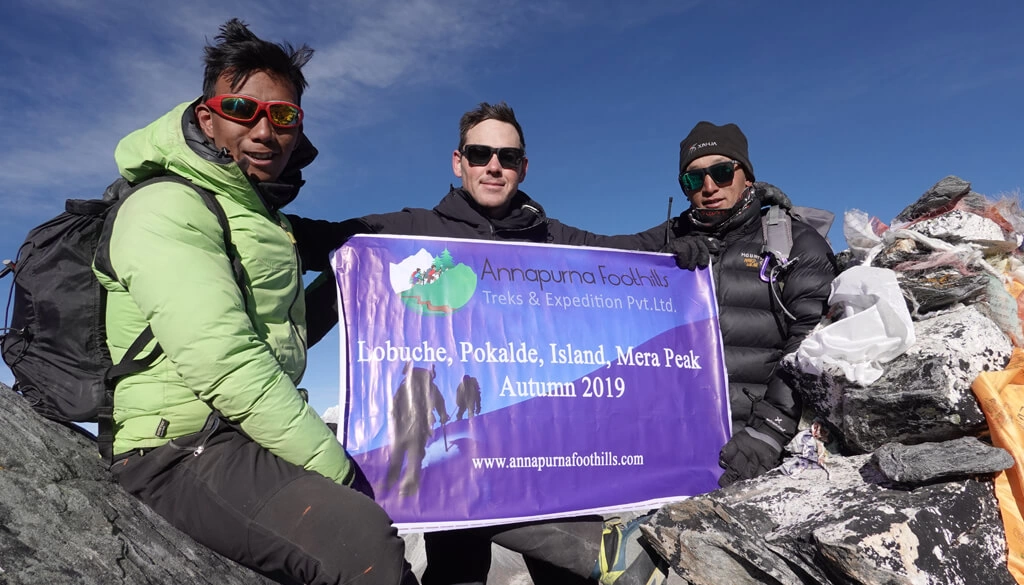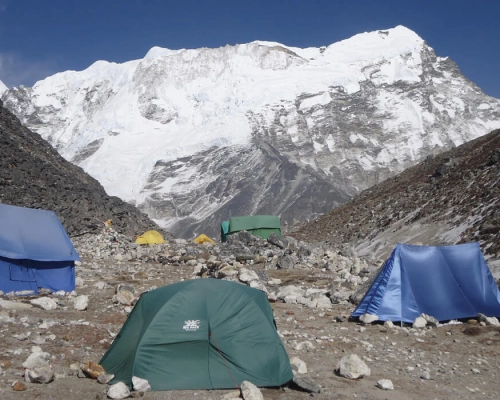About Island Peak Climbing via Pokalde Peak
First thing first, climbing Island Peak (6189m) is for sure, a big deal as one needs to have a good knowledge about ice and rock climbing which entails experience with climbing equipments such as mountaineering boots, crampons, abseiling, glacier trekking, crossing ladders, ice axe, climbing fixed ropes etc. to maximize their chance of success. With that being said, another most important factor is acclimatization. Acclimatization is the key. With proper acclimatization, the chances of summiting Island peak or any other 6000m Trekking Peaks gets better. Accordingly, we’ve designed an exclusive package which combines the all-time Himalayan Classic Everest Base Camp Trekking, Pokalde Peak Climbing (5806m) and finally the main objective of our trip, Island Peak Climbing.
Island Peak Climbing and Pokalde Peak Climbing via Everest Base Camp Trekking and is an exclusive yet complete trekking and climbing package for those who wants to have a genuine high altitude climbing experience on snow and ice. This trip accomplishes the dream of trekkers who want to experience the historic route to the base of the world’s highest mountain, Mount Everest (8848.86m) along with a 6000m+ Peak Climbing. Previous climbing experience will be helpful. Still, our highly experienced Sherpa climbing guides will also provide training and practice of relevant skills such as using jumor, abseiling and mainly crossing the ladders section on Island Peak.
To maximize the success rate of Island peak climbing to its fullest, we have added Pokalde Peak (Dolma Ri) climbing in our itinerary before attempting for Island Peak 6189m. Nestled at an elevation of 5806m, Pokalde Peak is one of the shortest and easiest trekking peaks in the Everest Region.
Regardless of its lower elevation, getting to the top of Pokalde rewards us with the magnificent views of the surrounding Himalayan range and also, climbing Pokalde peak will help us in better acclimatization which will directly help us in increasing our chances of summiting Island Peak.
The best season for climbing Island Peak via Pokalde Peak in Nepal is from March to May (Spring) and from September to November (Autumn). However, the winter is also a great time to climb if you are well prepared for the cold weather. In the crisp and cold month of December, the views of mountains are crystal clear and there are fewer trekkers around. The duration of this exclusive Trip can be lengthened or shortened according to your preference. Annapurna Foothills Treks and Expedition will arrange every detail of your Island Peak via Pokale Peak Expedition; lodge accommodation, guides, food, as well as all the necessary climbing and camping equipment.
Planning to climb Island Peak via Pokalde Peak in 2024 and 2025
Guaranteed Departures. We are preparing for our Spring and Autumn 2023 and 2024 dates and groups for Island Peak via Pokale Peak Expedition.
Please get in touch for further details and book your slot.








.webp)






